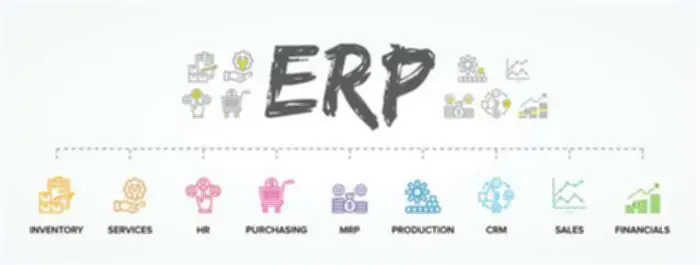How Multiplier Stacking Enhances Game Design
Multiplier stacking is a sophisticated mechanic in modern game design, particularly prevalent in slot games. It involves layering multiple multipliers to amplify potential winnings, significantly impacting both gameplay excitement and player engagement. As game developers seek to create more dynamic and rewarding experiences, understanding how multiplier stacking functions and influences outcomes becomes essential. This article explores the core principles behind multiplier stacking, illustrates practical examples—including insights from popular titles like Rocket Reels Free—and discusses design strategies that enhance player satisfaction.
- Introduction to Multiplier Stacking in Game Design
- Fundamental Concepts of Multipliers in Slot Games
- The Mechanics of Multiplier Stacking
- Examples of Multiplier Stacking in Modern Slot Games
- Enhancing User Experience Through Visual and Functional Design
- The Mathematical and Probabilistic Foundations of Multiplier Stacking
- Design Challenges and Solutions in Implementing Multiplier Stacking
- Player Psychology and Engagement Strategies
- Future Trends and Innovations in Multiplier Stacking
- Conclusion: The Impact of Multiplier Stacking on Modern Game Design
Introduction to Multiplier Stacking in Game Design
Multiplier stacking refers to the technique of applying multiple multipliers simultaneously within a game to increase potential payouts. Its primary purpose is to heighten the thrill of gameplay by creating opportunities for unexpectedly large wins. As players observe overlapping multipliers during bonus rounds or special spins, their excitement and engagement levels rise, fostering a more immersive experience. This mechanic fundamentally alters how outcomes are perceived, making wins feel more impactful and encouraging continued play.
The impact of stacking on game outcomes is profound: it can turn a modest win into a substantial payout, especially when multiple multipliers overlap. For game designers, leveraging this mechanic strategically can enhance the overall appeal and profitability of their titles.
Fundamental Concepts of Multipliers in Slot Games
At the core of multiplier mechanics are several basic elements: multipliers themselves, wins, and clusters. Multipliers are numerical factors that amplify the value of a win, often represented as 'x2', 'x3', etc. Wins are the outcomes resulting from symbol combinations, and clusters refer to groups of matching symbols that trigger payouts. When multiple clusters or features occur simultaneously, their multipliers can combine to produce larger payouts.
To ensure players clearly understand their potential, game interfaces incorporate balance, bet, and win fields. These visual cues help players track their stake, current winnings, and the impact of multipliers. Effective visual design, such as distinct color coding and clear labels, enhances comprehension, especially during complex stacking scenarios.
The Mechanics of Multiplier Stacking
When multiple multipliers are applied within a single spin, their interaction depends on the game’s rules. Typically, overlapping multipliers are combined either through addition or multiplication. For instance, if two multipliers, x2 and x3, overlap, the payout might be calculated as either (base payout) × (2 + 3) = ×5 or (base payout) × (2 × 3) = ×6, depending on the design.
Mathematically, multiplication tends to produce more significant payout boosts, which is why many modern games favor stacking multipliers multiplicatively. This approach increases the perceived value of overlapping multipliers, making the gameplay more exciting and rewarding.
The impact on payout calculations is notable: overlapping multipliers can exponentially increase payouts, but also introduce variability and risk, which must be balanced carefully in game design.
Examples of Multiplier Stacking in Modern Slot Games
Modern slot titles frequently incorporate multiplier stacking to boost player excitement. A notable example is Rocket Reels, which demonstrates how layered multipliers can be visually and functionally integrated to create dramatic payout opportunities. During bonus rounds, overlapping multipliers often stack, resulting in payout multipliers that can reach into the hundreds, depending on the game’s mechanics.
Visual cues such as glowing borders, animated multipliers, and color-coded overlays help players intuitively understand stacking effects. These design choices clarify when multipliers are overlapping and how they combine, reducing confusion and enhancing strategic play.
Player strategies evolve around these mechanics: players aim to trigger overlapping multipliers during high-value spins or bonus features, seeking to maximize their winnings.
Enhancing User Experience Through Visual and Functional Design
Clear visual communication is crucial when implementing stacking mechanics. High-contrast labels for fields such as 'Multiplier' and 'Win' help reduce player confusion, especially during rapid gameplay. Effective use of color, animation, and layout guides players' attention to stacking effects, making complex interactions understandable at a glance.
Features like turbo play, which speeds reel animations, also contribute to a smoother experience. By accelerating visual feedback, players can quickly process the impact of overlapping multipliers, maintaining high engagement without sacrificing clarity.
Ultimately, transparent visual cues foster fairness and trust, encouraging players to explore stacking mechanics confidently and strategically.
The Mathematical and Probabilistic Foundations of Multiplier Stacking
From a mathematical perspective, stacking multipliers influences key statistical measures like expected value and variance. When multiple multipliers overlap, the expected payout increases, but so does variability, which can make outcomes less predictable and more exciting. This balance is critical for maintaining appeal while ensuring the game remains fair and within regulatory standards.
Probabilistic analysis shows that the likelihood of multiple multipliers overlapping depends on the frequency of bonus triggers, symbol arrangements, and game features. For example, in a game with a 1 in 100 chance of a multiplier feature activating, the probability of overlapping multipliers during a bonus may be low but significant enough to create memorable moments.
These insights guide developers in fine-tuning stacking mechanics to optimize player excitement without inflating house edge excessively.
Design Challenges and Solutions in Implementing Multiplier Stacking
A primary challenge lies in preventing player confusion or perceived unfairness. Overlapping multipliers, if not visually distinct, can lead to misunderstandings about payout calculations. To address this, designers incorporate intuitive visual cues like layered effects, distinct colors, and animated highlights that clearly indicate stacking.
Maintaining game balance while maximizing excitement requires careful calibration of how often multipliers stack and their maximum levels. Striking this balance ensures players feel rewarded without feeling the game is rigged or overly volatile.
Continuous testing, player feedback, and adherence to regulatory standards are essential to refine these mechanics.
Player Psychology and Engagement Strategies
Stacking multipliers tap into fundamental psychological triggers, such as the thrill of potential large wins and the anticipation of bonus features. When players see overlapping multipliers, their excitement builds, encouraging longer play sessions and repeated spins. This mechanic leverages the excitement of near-misses and the hope of hitting big payouts.
Educating players about how stacking mechanics work can foster trust and strategic engagement. By understanding the potential for amplified wins, players are motivated to pursue certain strategies, such as aiming for bonus triggers or specific symbol combinations.
Overall, well-designed stacking mechanics serve as a compelling engagement tool, balancing thrill with transparency.
Future Trends and Innovations in Multiplier Stacking
Emerging technologies such as augmented reality (AR) and virtual reality (VR) open new horizons for multiplier stacking. These platforms enable immersive visualizations where overlapping multipliers can be represented as dynamic, three-dimensional effects, heightening player immersion and understanding.
Adaptive stacking mechanics, which respond to player skill levels or gameplay behavior, are also gaining traction. For instance, a game might subtly increase the likelihood of stacking multipliers for experienced players, providing a personalized challenge and reward system.
The integration of real-time feedback and analytics facilitates the creation of highly tailored experiences, fostering loyalty and prolonged engagement.
Conclusion: The Impact of Multiplier Stacking on Modern Game Design
Multiplier stacking is a powerful tool in the modern game designer’s arsenal, offering the ability to significantly enhance player excitement and potential rewards. When implemented with clear visual cues and balanced mechanics, stacking can create memorable moments that encourage continued engagement and trust.
Achieving this balance requires thoughtful design considerations—balancing complexity with accessibility, and excitement with fairness. As technology advances, innovations like AR and adaptive mechanics will further develop the potential of stacking, promising even more immersive and personalized gaming experiences.
Ultimately, well-executed multiplier stacking not only boosts the thrill of gameplay but also elevates the overall quality and appeal of modern slot games, shaping the future of interactive entertainment.





